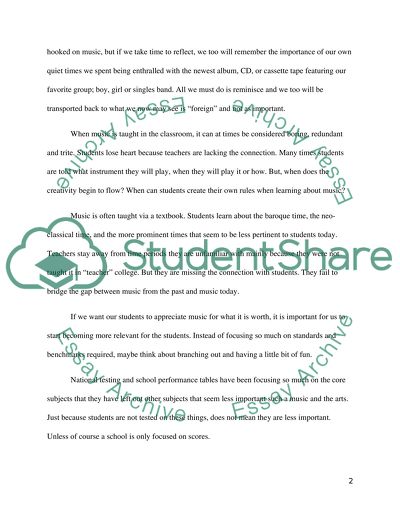Cite this document
(“Music in Arts Education Research Paper Example | Topics and Well Written Essays - 1000 words”, n.d.)
Music in Arts Education Research Paper Example | Topics and Well Written Essays - 1000 words. Retrieved from https://studentshare.org/education/1438817-music-in-arts-education
Music in Arts Education Research Paper Example | Topics and Well Written Essays - 1000 words. Retrieved from https://studentshare.org/education/1438817-music-in-arts-education
(Music in Arts Education Research Paper Example | Topics and Well Written Essays - 1000 Words)
Music in Arts Education Research Paper Example | Topics and Well Written Essays - 1000 Words. https://studentshare.org/education/1438817-music-in-arts-education.
Music in Arts Education Research Paper Example | Topics and Well Written Essays - 1000 Words. https://studentshare.org/education/1438817-music-in-arts-education.
“Music in Arts Education Research Paper Example | Topics and Well Written Essays - 1000 Words”, n.d. https://studentshare.org/education/1438817-music-in-arts-education.


